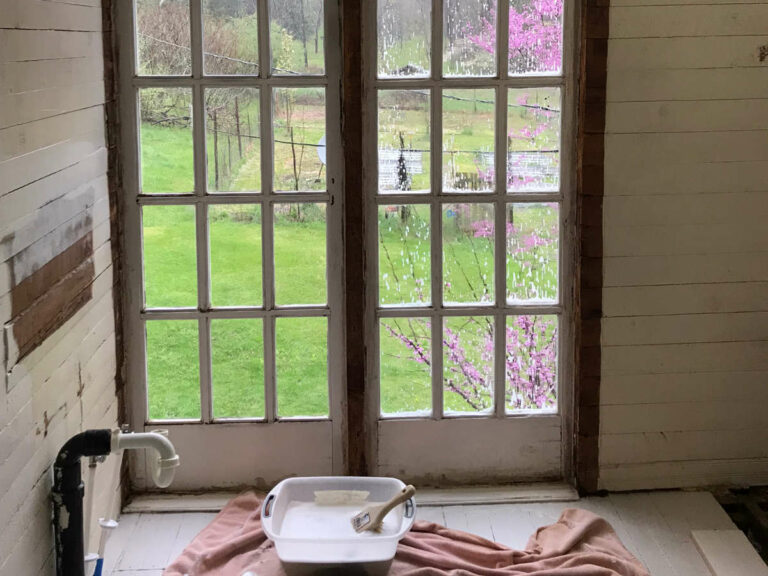Photo by Katy Morikawa
Audio
Or listen wherever you get your podcasts
The background on this method can be found in the previous post: Turning A Breakdown Into An Opportunity (Episode 21). It includes my own personal example, the story of how I applied this method, as well as the core insight that anxiety is at heart a kind of indecision.
Caveat: If you have profound anxiety or suffer panic attacks, you may want the support of a therapist while you do this work. In any case, please don’t do exercises like this while operating heavy machinery, under the influence of drugs, in cases where the stakes are high, or surrounded by unsupportive people. Practice sensible limits with regard to set and setting with all inner work.
1. Pick a specific anxiety to work with.
It could be situational as in a fear of flying, or it it could be episodic as in every evening after dinner, or it could be heavy and pervasive dominating your days and nights. The more pronounced the better, as the lesser anxieties tend to fade when you place your attention on them (this is the power of the light of consciousness). So, if you have an anxiety that is heavy and pervasive, look on the bright side: It makes it very easy to work with! Not to diminish the intensity of profound anxiety. I know enough about this to know that it is not something that you would ever wish on yourself or anyone else. But I do think it is helpful to find the silver lining with any of the crappy things you have to deal with for feeling more empowered and productive. Who knows? You might even come to enjoy this kind of inner work, in the same way some people enjoy working out.
2. As you do this process, get curious and observe.
Curiosity, witnessing, observation, these are all powerfully strengthening and will keep you from being swept into the maelstrom of the anxiety.
3. Notice the sensations in your body associated with your anxiety.
Notice the quality of your breath, patterns of tension, how it feels inside physically. Your anxiety may show up as agitation or a tangible vibratory pattern, heat, pain, and so on. Whatever the sensations are, just notice them. Try not to focus on your thoughts about the anxiety (like, I hate that I get anxious, it’s so debilitating, I’m weak, what a loser, and so on). We’re also not dealing with the causes of the anxiety at present. That is a whole valid area of work with anxiety, but it’s not what we’re doing here. Take notes if you need to.
4. Now inquire into the core of the anxiety and notice the impulses or voices contained within it.
We tend to be dual in nature, a fact of living within a magnetosphere and possessing a nervous system operated by positive and negative charges for conducting information across the system. There will probably be two core impulses or voices at war with each other within the anxiety, but if there are more, allow yourself to become aware of them all. If you need time to discern these, take all the time you need. Write in a journal or talk outloud to yourself. Sleep on it. Let your subconscious help you over time. Wait until a clear and distinct set of impulses and dynamic interactions emerge, until they’re no longer vague and you’re not guessing anymore (see why you need a more entrenched symptomatology for this?). Some examples, to help you begin to recognize these dynamics include: I’m angry but I don’t want to hurt anyone’s feelings, I absolutely know what to do but I’m afraid, I need the freedom of losing my job but I can’t bear to lose my job because I don’t know what I’ll do without the security, I can’t stand that person but they might change my life, and so on. As you get more practiced with this, you’ll be able to do it more quickly and on the fly.
5. Once you understand the dynamic, now is the time to make a choice.
Just becoming aware of all of the impulses engaged in your inner battle can be incredibly revelatory. These are all you. Embrace them all. This is important, even though you will be finding a pathway out of the impasse which will likely involve choosing one over the other. But rather than banishing one and favoring the other, try an attitude of allowing one to lead and inviting the others to follow. Any time we banish or reject parts of ourselves, we set ourselves up for unintegrated shadow material that can come back to haunt us.
6. If a choice is clear to you, then choose.
The beauty in anxiety is that you don’t have to manufacture the impulse you’ve chosen, because it’s already there, struggling to be heard. By choosing it, all you do is break the impasse. Spending the time to acquaint yourself with each of the impulses involved makes this part much easier.
7. If the choice is not clear, don’t despair.
If you make the “wrong” choice, meaning a choice that doesn’t serve the overall intentions of your life, there is an organic process which will unwind in the choosing that will bring you back around to the “right” choice.
8. Guidelines for choosing, if you need them
Choose the one that helps you sleep better at night. Choose the one that feels more expansive and spacious, bearing in mind that just being highly energetic like rage, isn’t necessarily expansive. Tune into the sensations of expansion vs. contraction rather than your ideas about it. See Jewel’s tips on Dilation & Contraction in The Magic Bubble (Episode 17).
9. Don’t get hung up on your decision locking you in for all time.
That’s dogma. Life withers in the face of dogma and flourishes in the face of expansion and growth which honors process. Your choice is important. It will break the deadlock inside of you. It will carry you forward into something new. Things will change because of that. After that, there will be new things, new choices, new opportunities. Nothing living is ever static. But sometimes it needs a bit of differentiation and sometimes it does need a choice.
I hope you enjoy this, I hope you find a way to work with it. Let me know!





